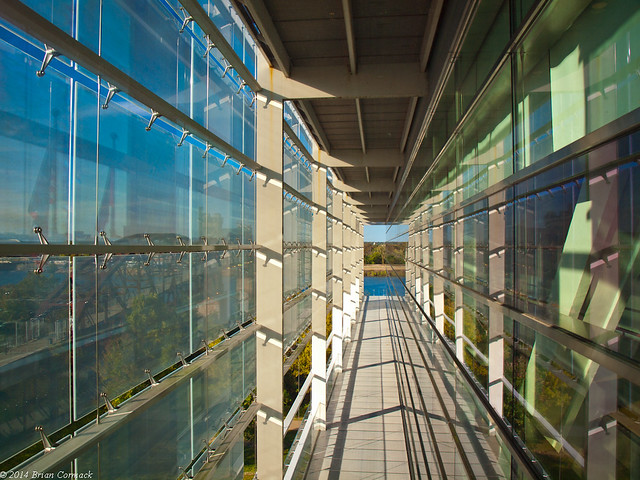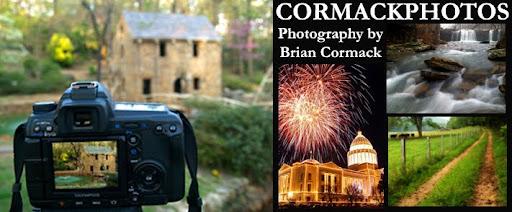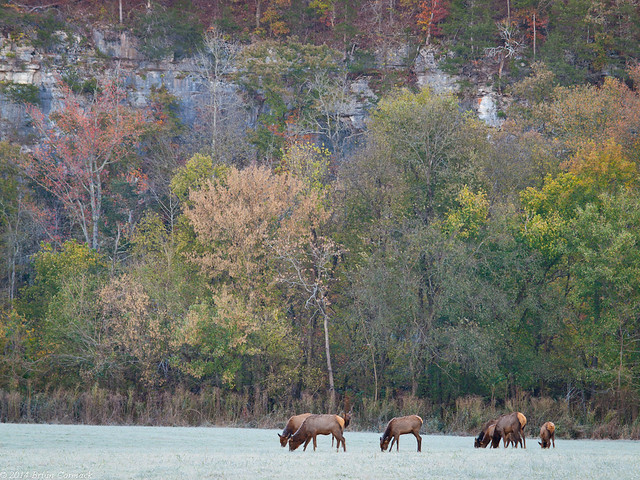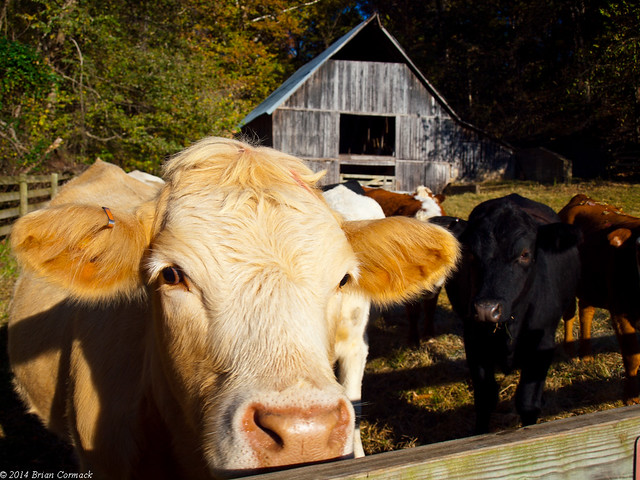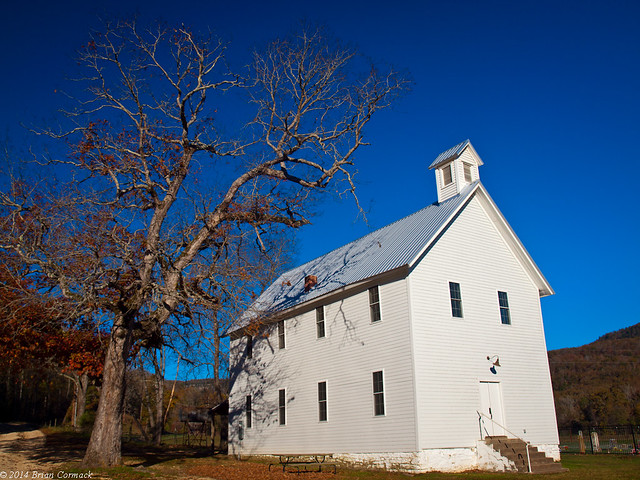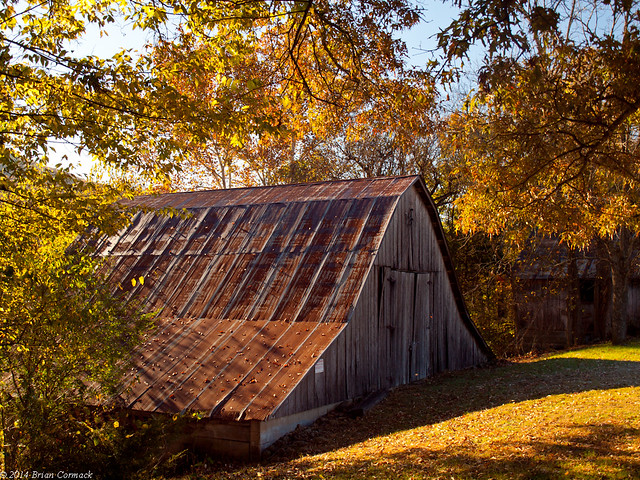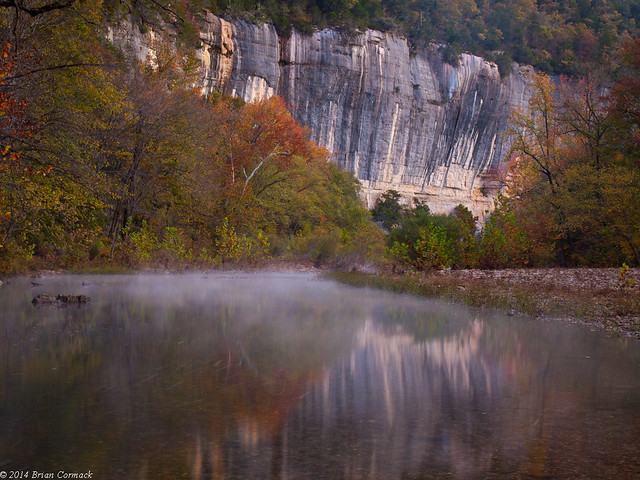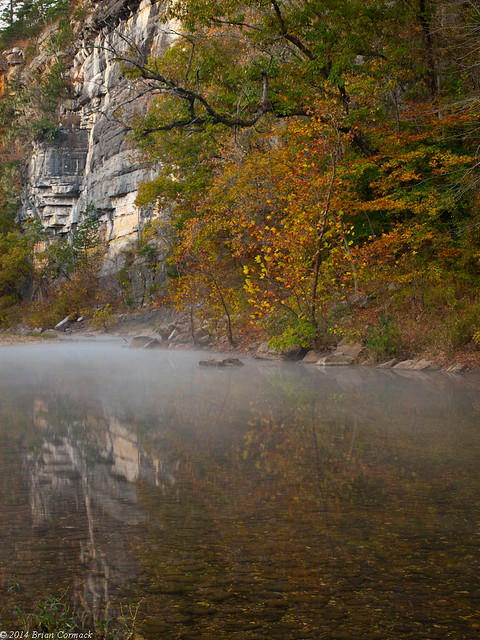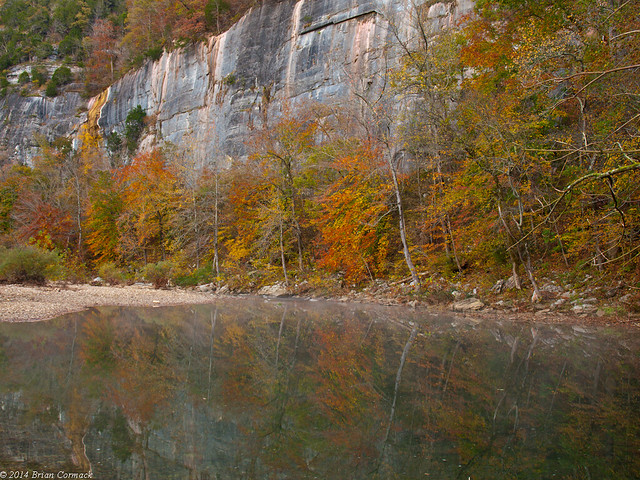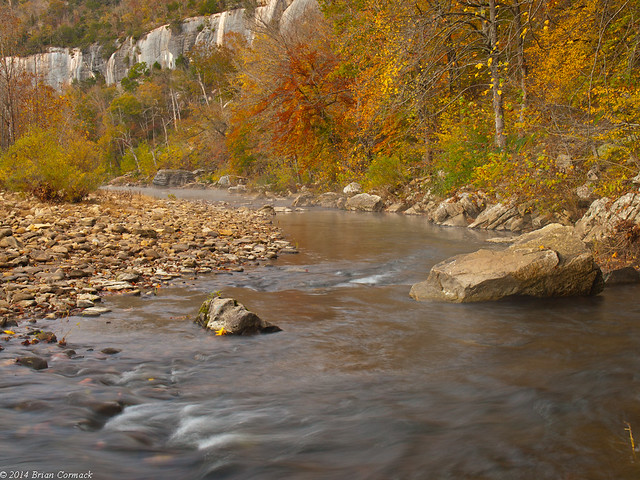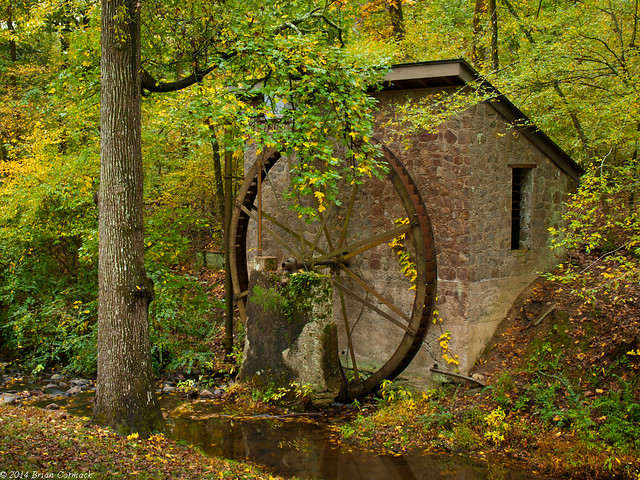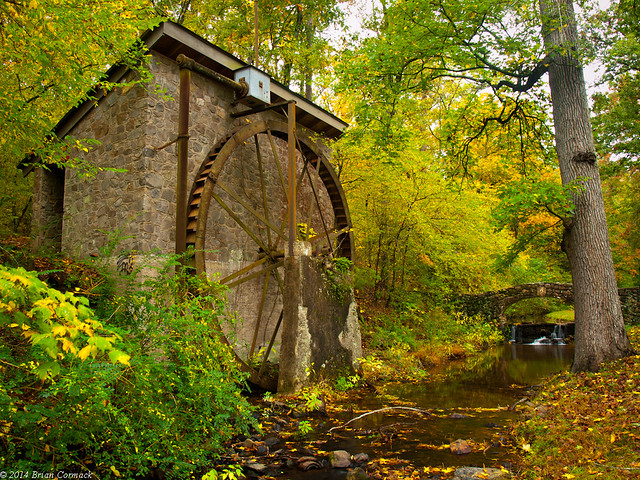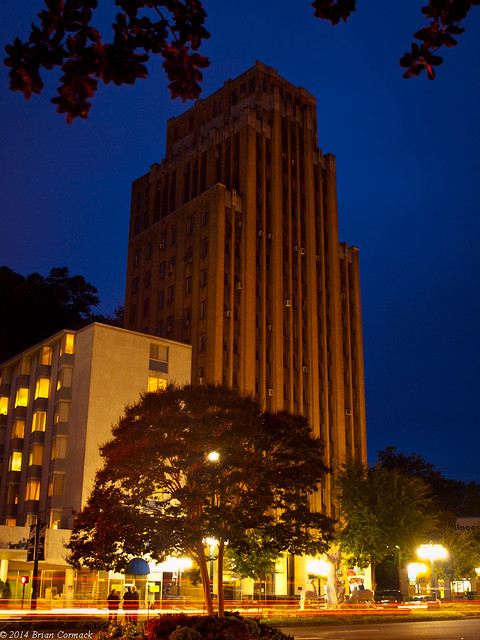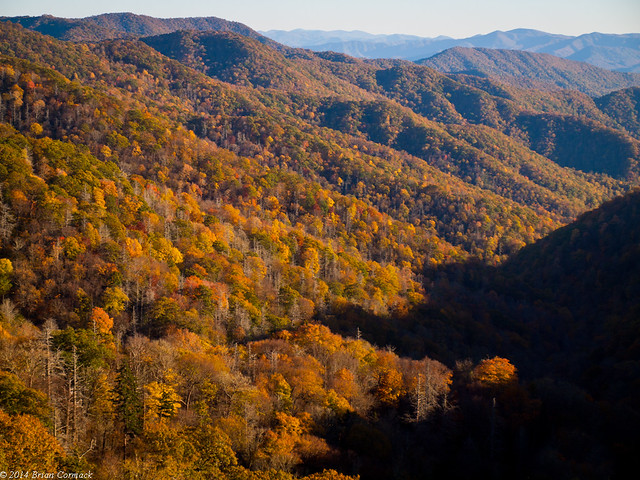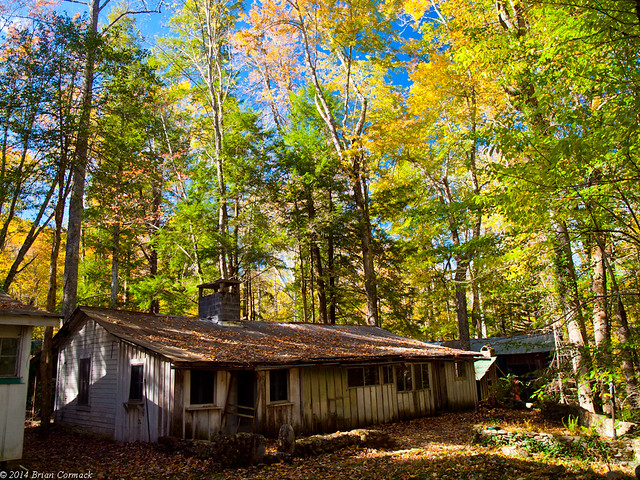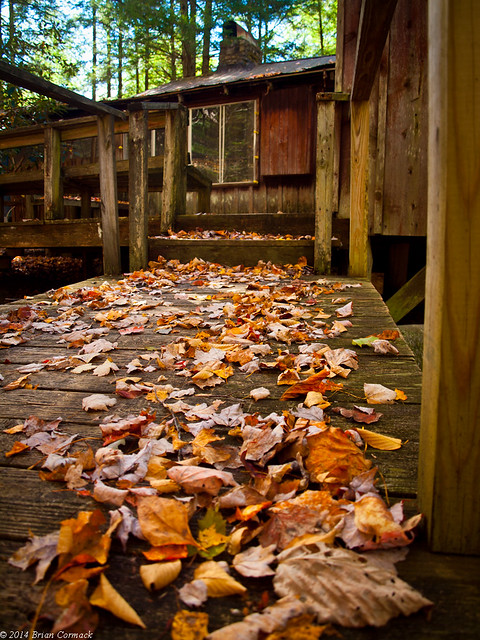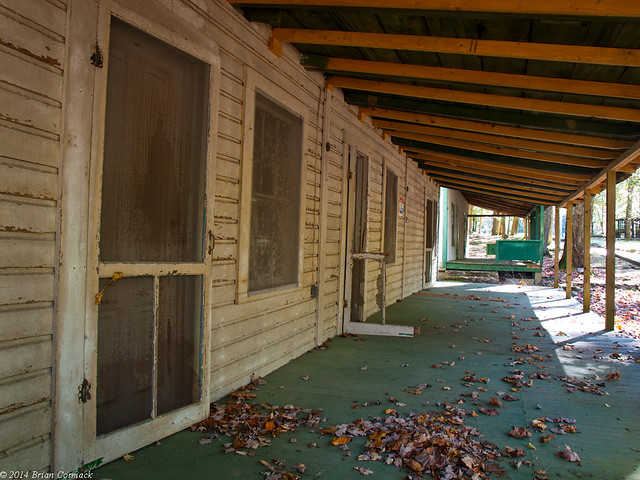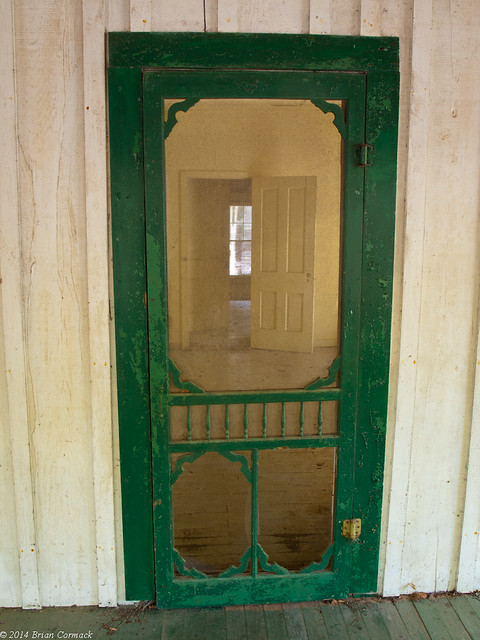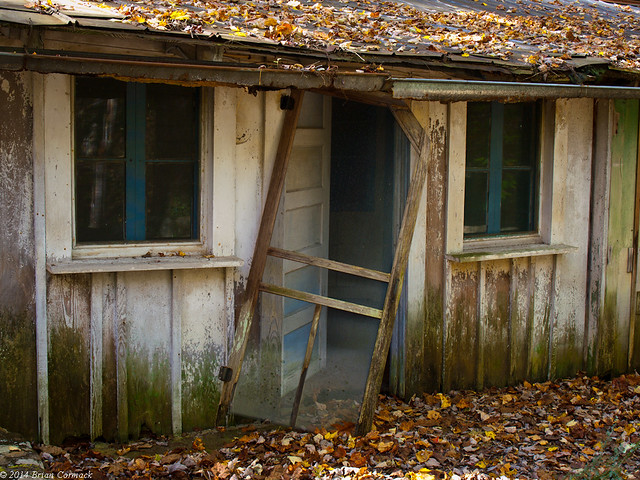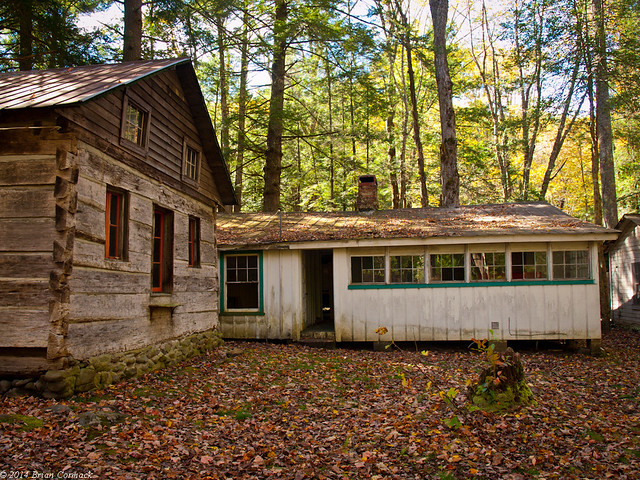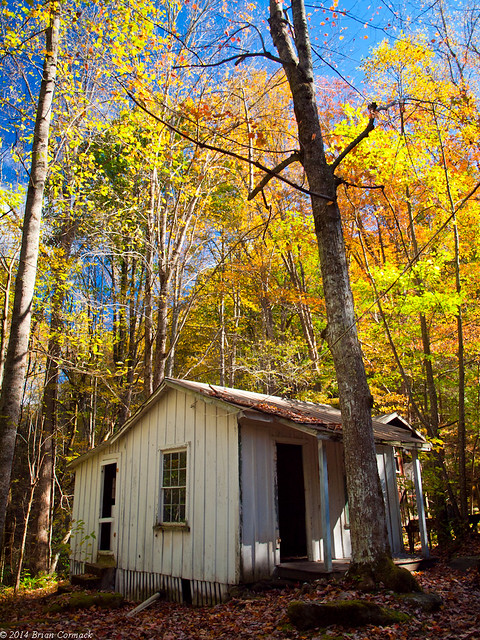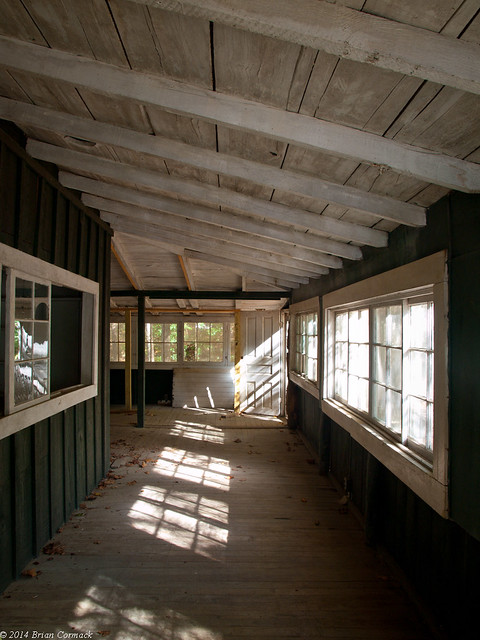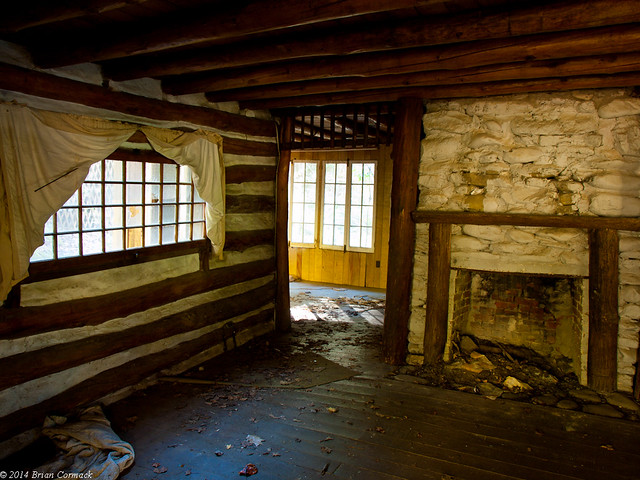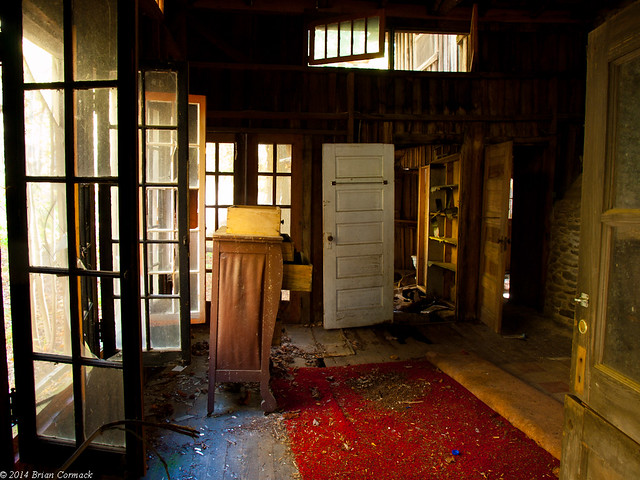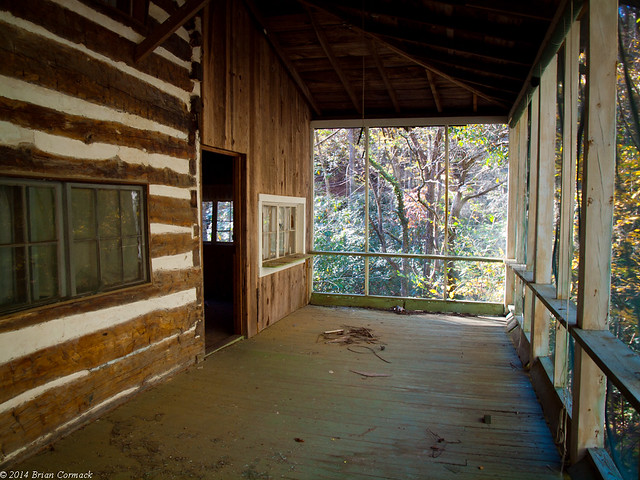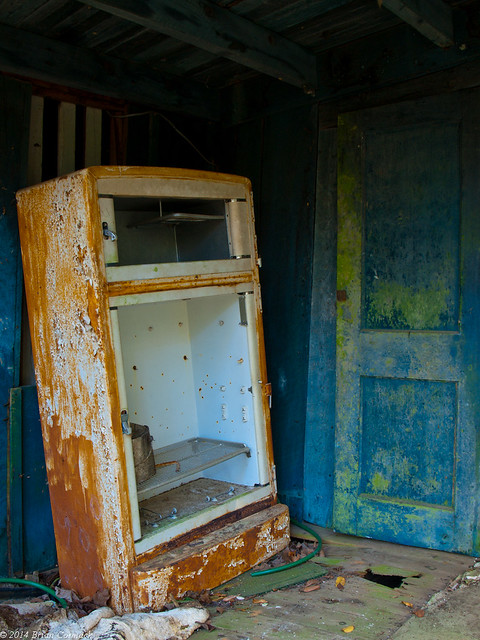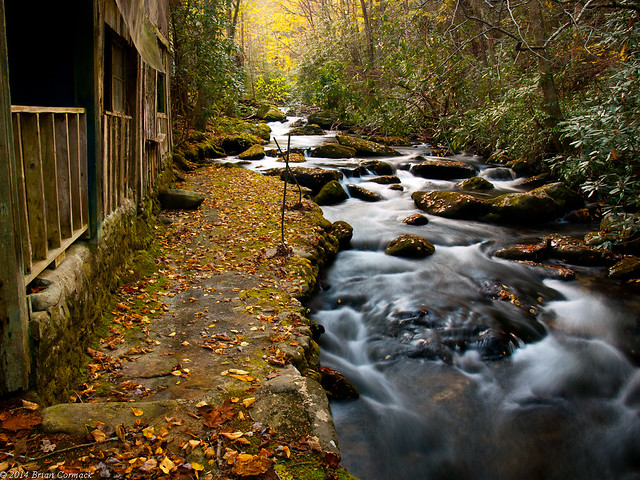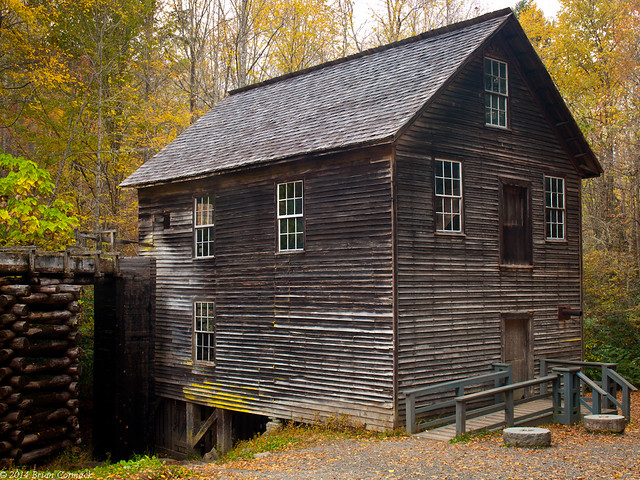On our last day, we decided to end the trip with a visit to one of the more spectacular areas of the park. The Roaring Fork Motor Scenic Drive is a short loop (only about 6 miles), but it packs a lot into that short distance. The drive actually starts in Gatlinburg, but it feels miles away from the packed strip of tourist traps and acres of Ripley’s Believe It Or Nots.
From Gatlinburg, the drive dips right into the middle of a thick and old forest. The road is narrow and one-way, and is too small for busses or RVs. While there was some traffic, it wasn’t as crazy as the gridlocked traffic jams in Cades Cove. People were driving extremely slow in places because this is supposedly one of the better places in the park to spot wildlife, like bears. We didn’t see anything, unfortunately. The only wild animal we encountered on the trip was the raccoon that visited the back porch of our cabin.
Non-native settlers began exploring the Roaring Fork area in the early 1800s. By the 1850s, there was a big enough population here that a crude road was constructed (which is now the Scenic Drive), and the amenities included a school, church, general store and two mills. The first stop on the Scenic Drive is the Ogle Homestead. The old cabin and barn were built sometime in the 1880s and 1890s. The cabin was built in the “saddleback” style, and is actually two cabins built around a single chimney.
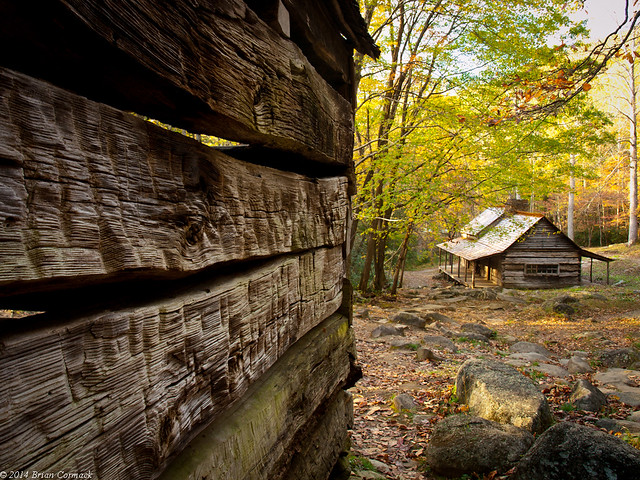
We headed to the next stop, the Jim Bales Place. The Bales family moved into this area in the 1830s, and built a homestead here. The old cabin is old, but it isn’t original to this spot. The Bales family apparently built a more modern house here, but the Park Service tore it down and moved in another old cabin that would better represent the olden pioneer days of Appalachia.
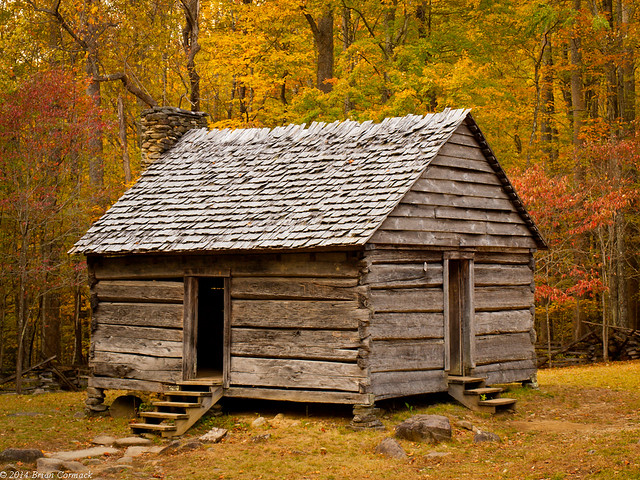
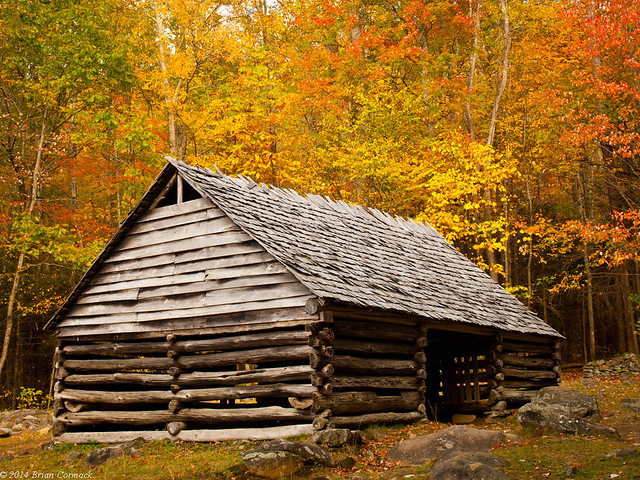
While waiting for a group taking family pictures to move along, I dropped down to explore Roaring Fork Creek. The creek starts along the slopes of Mount Le Conte, at an elevation of nearly 5,000 feet. From its beginnings, the creek drops more than 2,500 feet in just a few miles, eventually heading into the narrow valley that is part of the Scenic Drive.
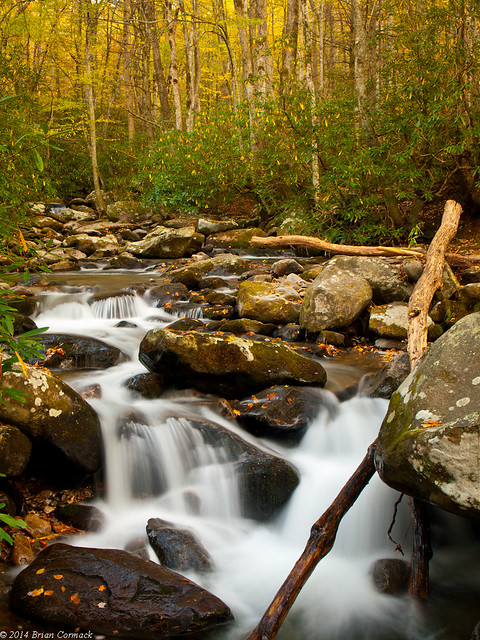
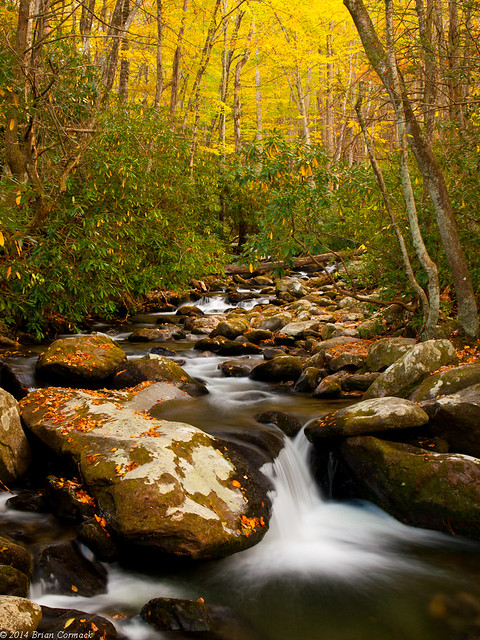
The creek gets its name because it can get quite vicious after heavy rains, and will loudly “roar” off of the surrounding mountain ridges.

Just down the road is the farm that also belonged to more members of the Bales family. The home here is an old dog-trot cabin that was probably built in the early 1900s.
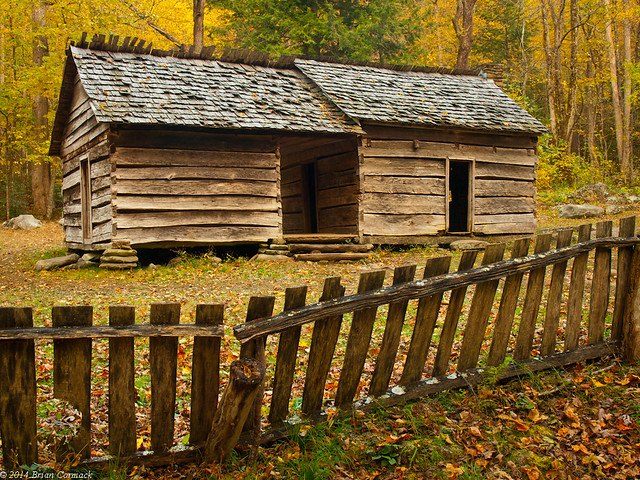
There are also a few other outbuildings that have been preserved here, including a hog pen, corn crib and a barn.
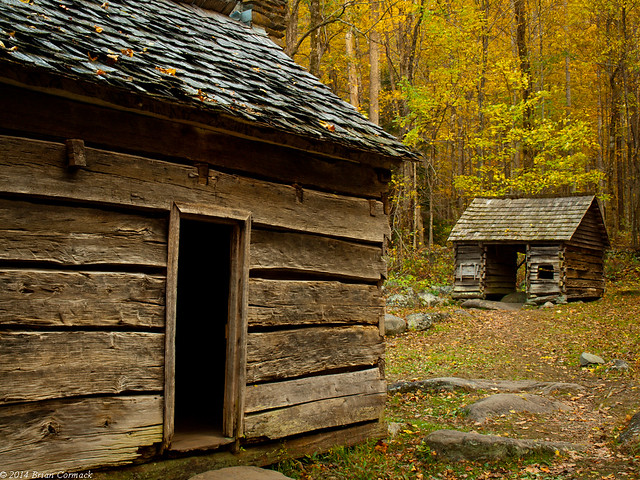
This one looked like a little dog house, like an old timey Snoopy would have been sitting on it back in the olden times.

The creek was built along the creek, which was making a lot of noise that day.
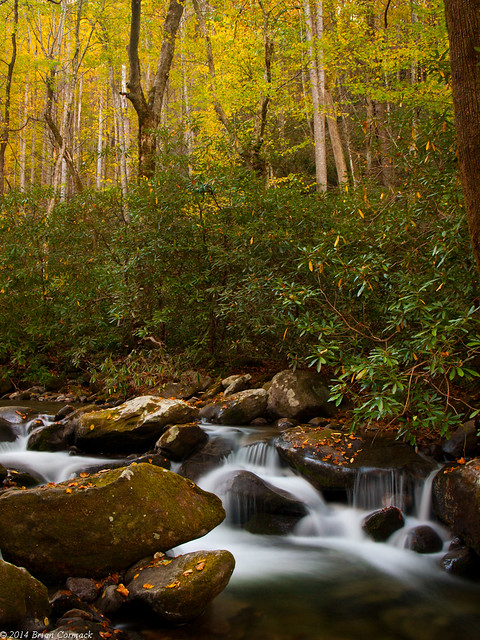
The last stop was the old Reagan Place, which stands out because the old saddleback cabin has painted sawboard panels.
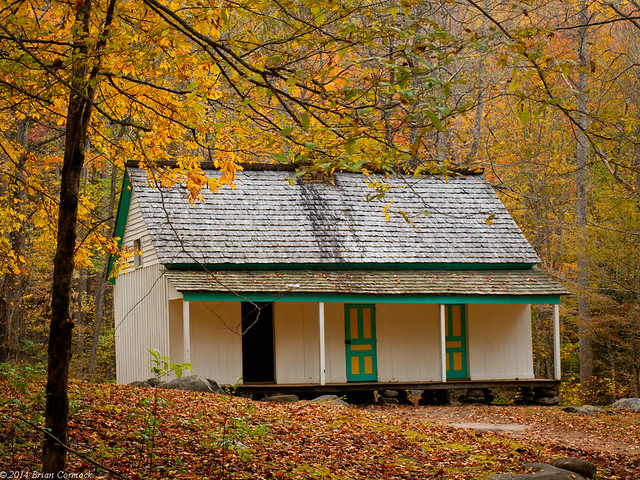
There is also a small grist mill here, with a wooden culvert directing water from the creek.

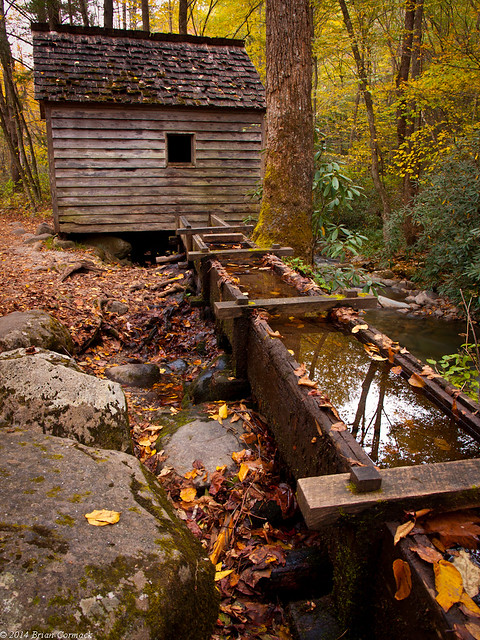
I wish I would have had more time to explore this area, but it was getting dark. I tried to squeeze out as much light as I could, but had to give in when I could barely see through the viewfinder.
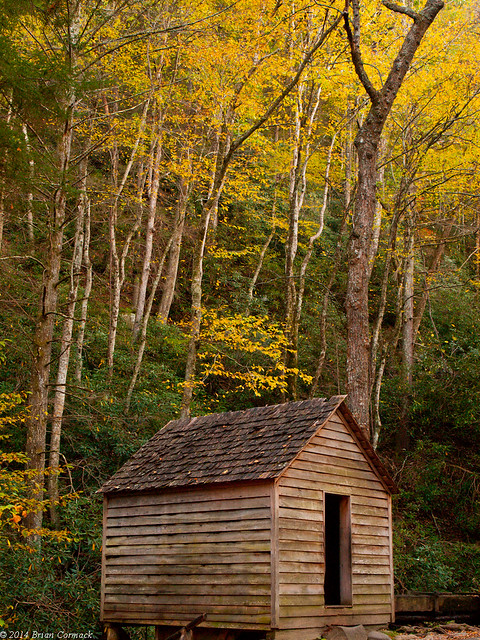
We drove back into Gatlinburg, and celebrated our first anniversary at
The Melting Pot. We left the Smokies the next morning, driving back to Nashville to celebrate our friends wedding. It was a great trip, one that I didn't want to end. But I did have some fall colors back in Arkansas to look forward too....

